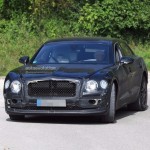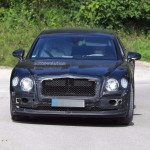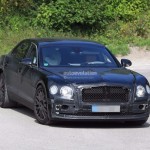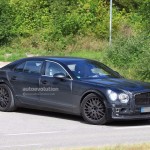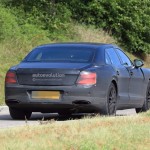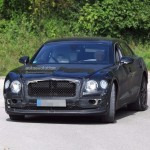4 Things To Know About The 2019 Bentley Continental Flying Spur
The Bentley Continental range is getting an upgrade. First, we’ll have the updated version of the GT coupe, then followed by the GT convertible, and finally, the Flying Spur sedan. The latter is due in 2019, though there is no specific date as of now.
But for the first time ever, we are treated with spy shots of the next Flying Spur in action. This first glance is enough to tell us we can expect a lot of great things from the next Flying Spur.
1. Exterior
The overall exterior design has evolved from the previous one. The main elements of the upgrade can be found on the lights—the headlights have a larger inner and smaller outer lights. This is the opposite of the current design.
On the sides, the lower and upper character lines give an entirely new facade while on the rear end, the taillights are taller and don’t wrap around the sides anymore. The license plate cutout moved also from the trunk to the bumper.
2. Platform
Same with the other Continental GT range, the Flying Spur will use elements of Porsche engineering. It will be based on Volkswagen Group’s MSB platform, which was specifically designed for large, rear- and all-wheel-drive cars with engines at the front.
Developed by Porsche, the platform is being used by the 2017 Panamera. The MSB Platform uses high-strength steel and aluminum for aerodynamics and rigidity purposes.
3. Drivetrain
The current Continental GT has an upgraded 6.0-liter W-12 that can produce 626 horsepower and 664 pound-feet of torque. It also has a stop-start function. The same engine will be fitted in the Flying Spur. A twin-turbo 4.0-liter V-8 engine that can produce 500 horsepower is also expected.
Bentley said that plug-in hybrids will also be offered for all of their vehicles. There’s only one transmission available for all variants–an 8-speed automatic and an all-wheel drive system.
4. Other Features
The Flying Spur will host a number of great features such as a 12.3-inch infotainment screen, an instrument panel display developed from the Audi virtual cockpit, LED matrix headlights, a three-chamber air suspension, and a 48-volt anti-roll control system that uses electronic actuators on the anti-roll bars.

